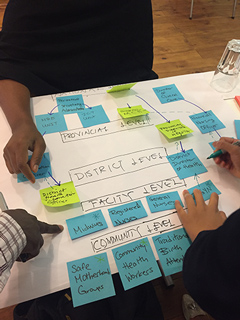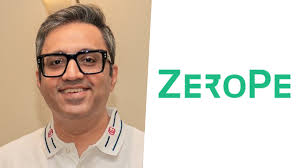 “Family planning services are not always prioritized in digitalization – but when the process is clear and transparent it’s much easier to understand how health information or commodities connects to a broader spectrum of quality of care,” explained Mary Lyn Gaffield, Scientist in the World Health Organization (WHO) Department of Sexual and Reproductive Health and Research, including the United Nations Special Programme HRP.
“Family planning services are not always prioritized in digitalization – but when the process is clear and transparent it’s much easier to understand how health information or commodities connects to a broader spectrum of quality of care,” explained Mary Lyn Gaffield, Scientist in the World Health Organization (WHO) Department of Sexual and Reproductive Health and Research, including the United Nations Special Programme HRP.
Enter the Digital Adaptation Kit (DAK) for Family Planning: a new tool for countries implementing WHO contraception and family planning recommendations in their digital systems.
It was developed by WHO, HRP, the United Nations Population Fund (UNFPA), JSI, PATH . It is grounded in quality of care and human rights.
Preparing to digitize with SMART Guidelines: structure and transparency are key
Digital adaptation kits, known as DAKs, are an important layer in SMART Guidelines – WHO’s approach to guideline development, delivery and application in the digital age.
DAKs guide the preparation stage in a specific area of health, once a ministry of health agrees a plan for investing in its digital health ecosystem.
Each DAK includes practical components such as workflow processes, data dictionaries, and decision logics. These ensure greater understanding of both the health information in WHO recommendations and the collaborative process necessary for digital implementation.
DAKs can also ensure trust. With the ever-increasing number of available digital tools, DAKs help implementers, software developers and users feel confident that digital content is accurate and in line with WHO recommendations.
“Of course, it is possible to ‘skip to the end’ and download a digital health application, but if you don’t know what is included or missing, there is a risk to the integrity of the final product as well as the lifespan of your investment,” said Garrett Livingston Mehl, Unit Head at WHO’s Department of Digital Health and Innovation.
He added, “As the field of digital health matures, we believe that tools like the digital adaptation kits can support countries to validate WHO recommendations in their digital systems, and also to harness future digital technologies towards health for all.”
 Digital guidelines are a quick and responsive approach to improving primary care
Digital guidelines are a quick and responsive approach to improving primary care
DAKs distill content from a range of published WHO guidance to ensure all relevant health information is included for a specific health area. The DAK for Family Planning draws on more than 10 guidance documents, such as Selected practice recommendations for contraceptive use and Family Planning: a global handbook for providers.
With its focus on services in the WHO universal health coverage (UHC) list, this DAK is ultimately a primary health care approach – one that can be applied within any country’s particular digital health system, since DAKs are software neutral (independent of any particular software application).
“The DAK for Family Planning is a much-needed resource, standardizing the adaptation process and ensuring that evidence based guidance will be available for health care workers including those in remotest areas, provided they have access to a mobile phone,” explained Dr Nancy Kidula, a Medical Officer in the WHO Regional Office for Africa.”
“The fact that it is linked to living guidelines addresses the perennial problem of using outdated recommendations, ultimately improving decision making, increased access and strengthened quality of family planning information and services.”
A human-centred approach to digital health
The DAK for antenatal care (ANC) launched earlier this year, and the approach is being expanded to other health domains. DAKs for HIV and STIs are forthcoming, and DAKs for immunizations, postnatal care (PNC), child health, and self-care interventions are in development.
“COVID-19 has accelerated the rise of digital health. However digital health is only effective if it includes the whole spectrum of quality of care,” explained Tigest Tamrat, Technical Officer in the WHO Department of Sexual and Reproductive Health and Research and HRP.
The DAK for Family Planning uses the algorithms developed from the medical eligibility for contraceptive methods and the WHO MEC app – but also goes much further. It addresses screening, testing and counselling for choosing and managing contraceptive methods, care and support for survivors of intimate partner and sexual violence, and considerations for adolescent well-being and promoting self-care interventions.
Added Tigest, “That’s why WHO Digital adaptation kits are such a crucial step in the SMART Guideline approach: they keep people – both implementers and users – at the heart of the digital journey.”












